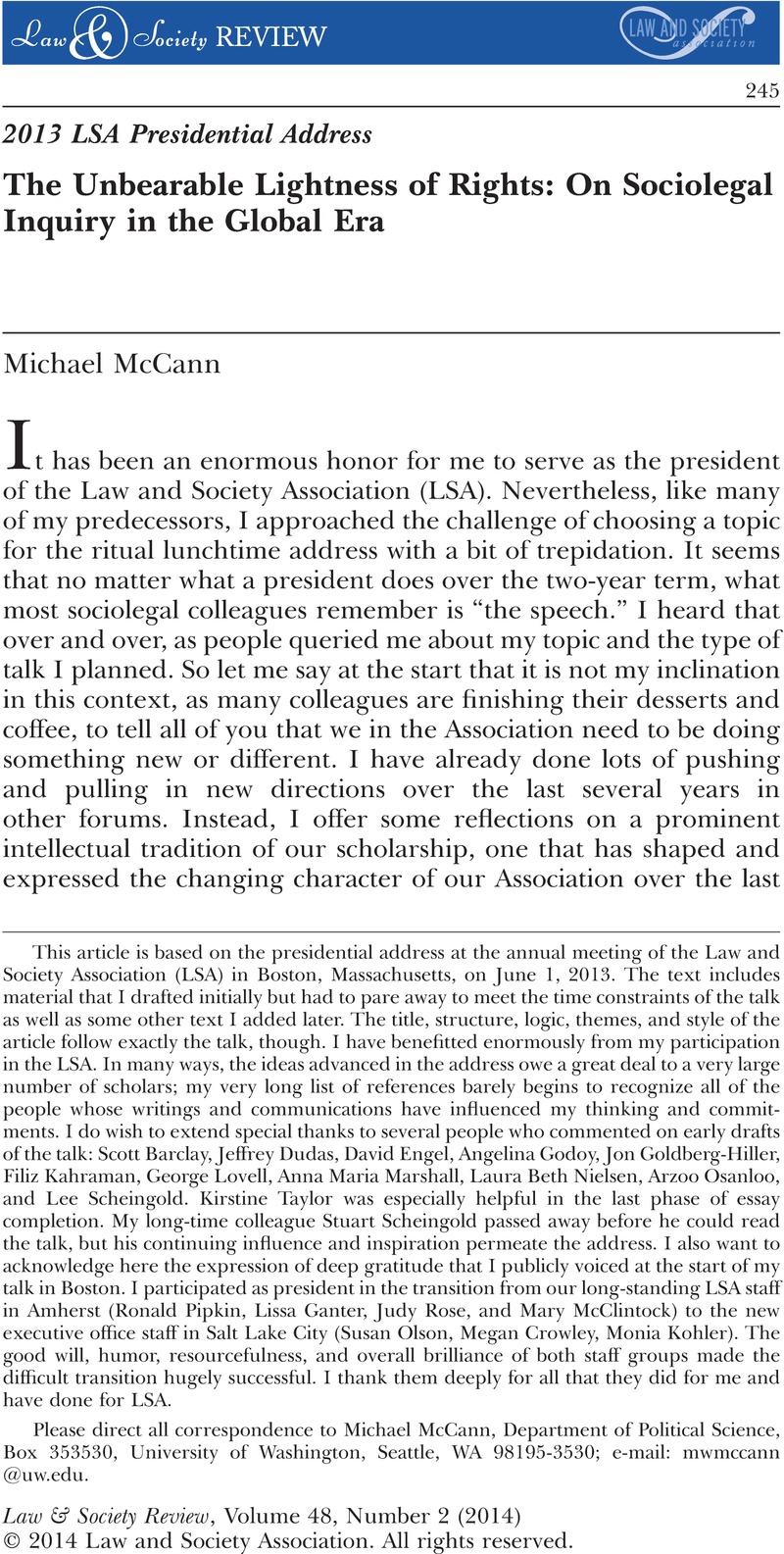Published online by Cambridge University Press: 01 January 2024

This article is based on the presidential address at the annual meeting of the Law and Society Association (LSA) in Boston, Massachusetts, on June 1, 2013. The text includes material that I drafted initially but had to pare away to meet the time constraints of the talk as well as some other text I added later. The title, structure, logic, themes, and style of the article follow exactly the talk, though. I have benefitted enormously from my participation in the LSA. In many ways, the ideas advanced in the address owe a great deal to a very large number of scholars; my very long list of references barely begins to recognize all of the people whose writings and communications have influenced my thinking and commitments. I do wish to extend special thanks to several people who commented on early drafts of the talk: Scott Barclay, Jeffrey Dudas, David Engel, Angelina Godoy, Jon Goldberg-Hiller, Filiz Kahraman, George Lovell, Anna Maria Marshall, Laura Beth Nielsen, Arzoo Osanloo, and Lee Scheingold. Kirstine Taylor was especially helpful in the last phase of essay completion. My long-time colleague Stuart Scheingold passed away before he could read the talk, but his continuing influence and inspiration permeate the address. I also want to acknowledge here the expression of deep gratitude that I publicly voiced at the start of my talk in Boston. I participated as president in the transition from our long-standing LSA staff in Amherst (Ronald Pipkin, Lissa Ganter, Judy Rose, and Mary McClintock) to the new executive office staff in Salt Lake City (Susan Olson, Megan Crowley, Monia Kohler). The good will, humor, resourcefulness, and overall brilliance of both staff groups made the difficult transition hugely successful. I thank them deeply for all that they did for me and have done for LSA.